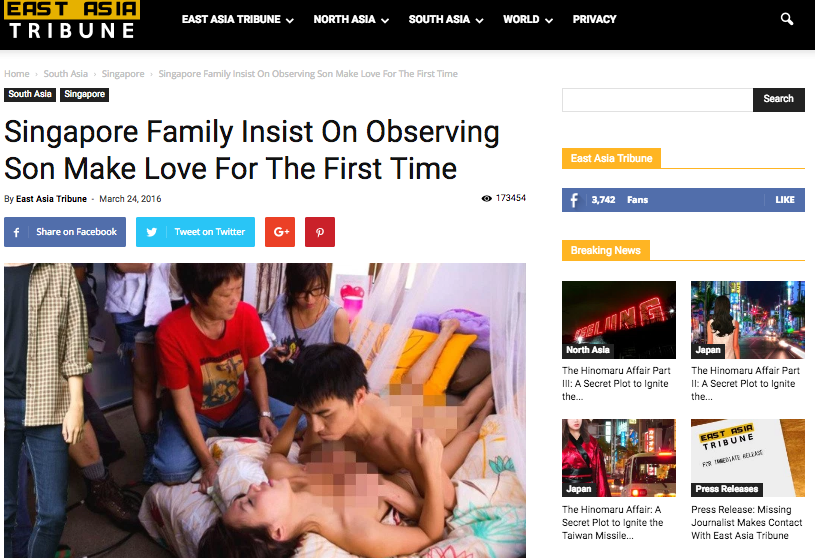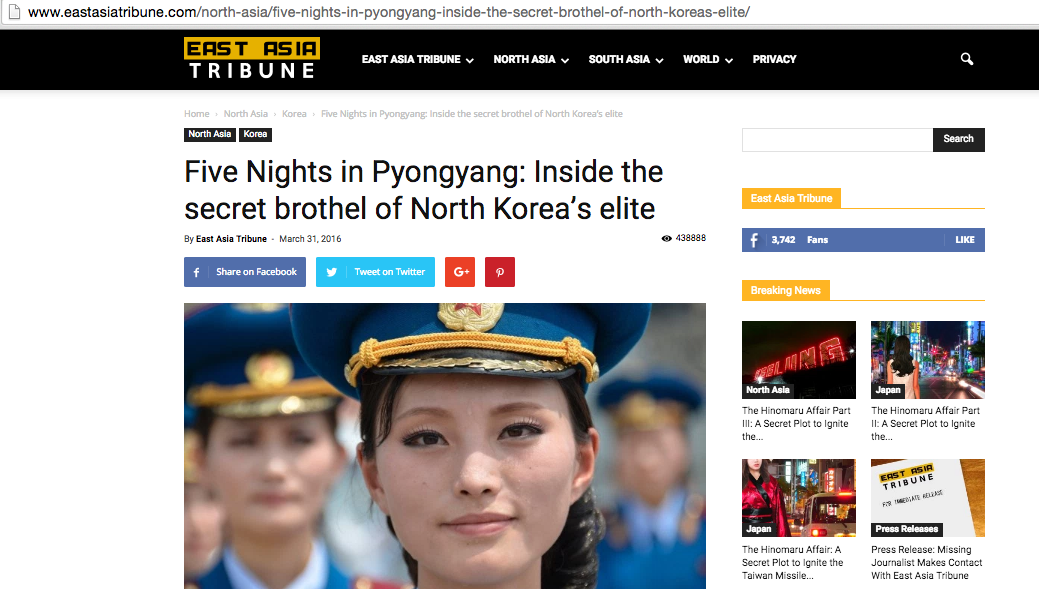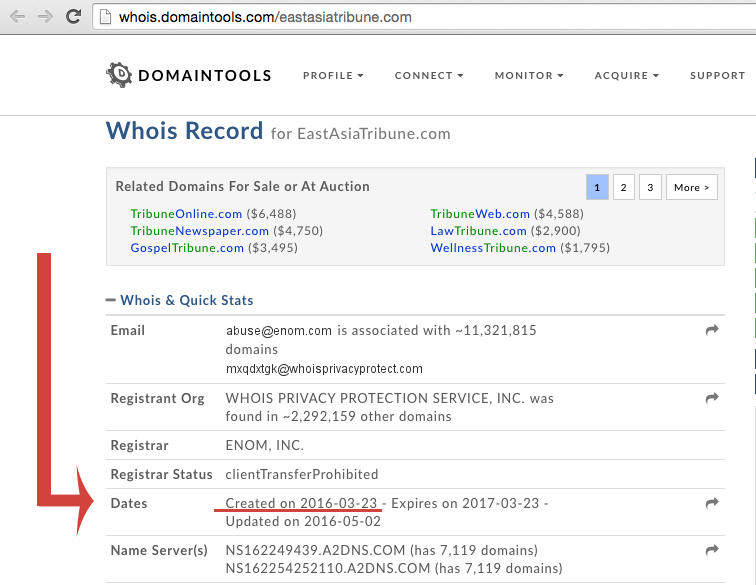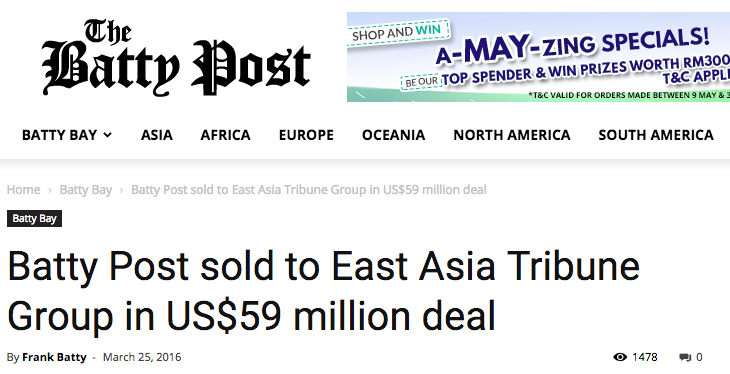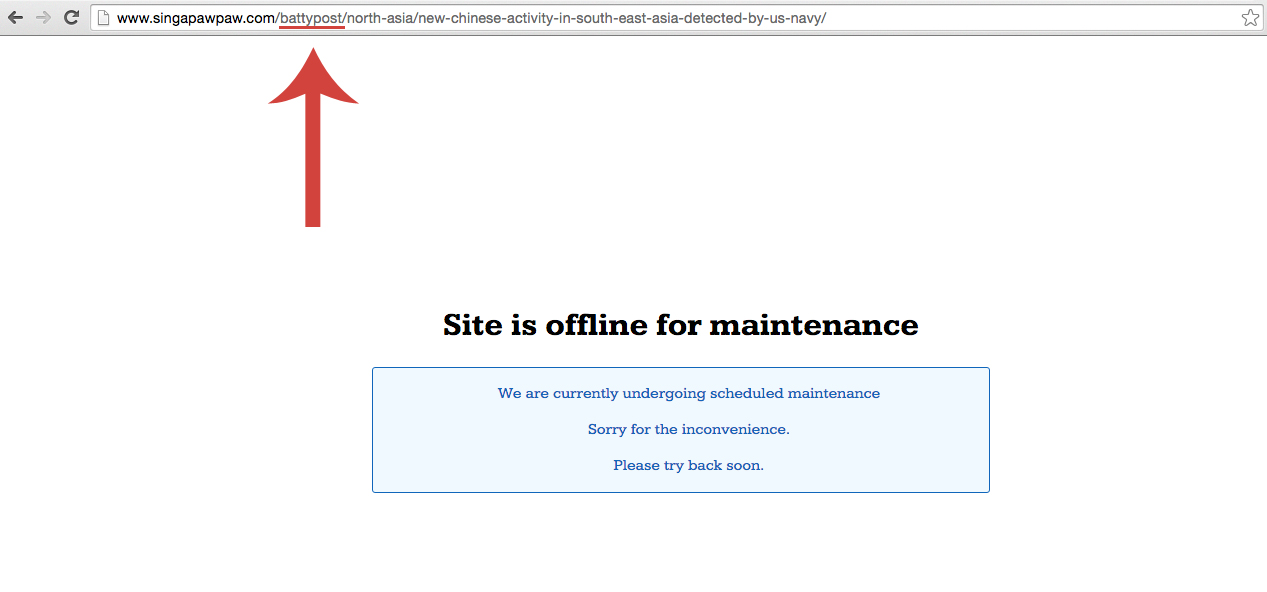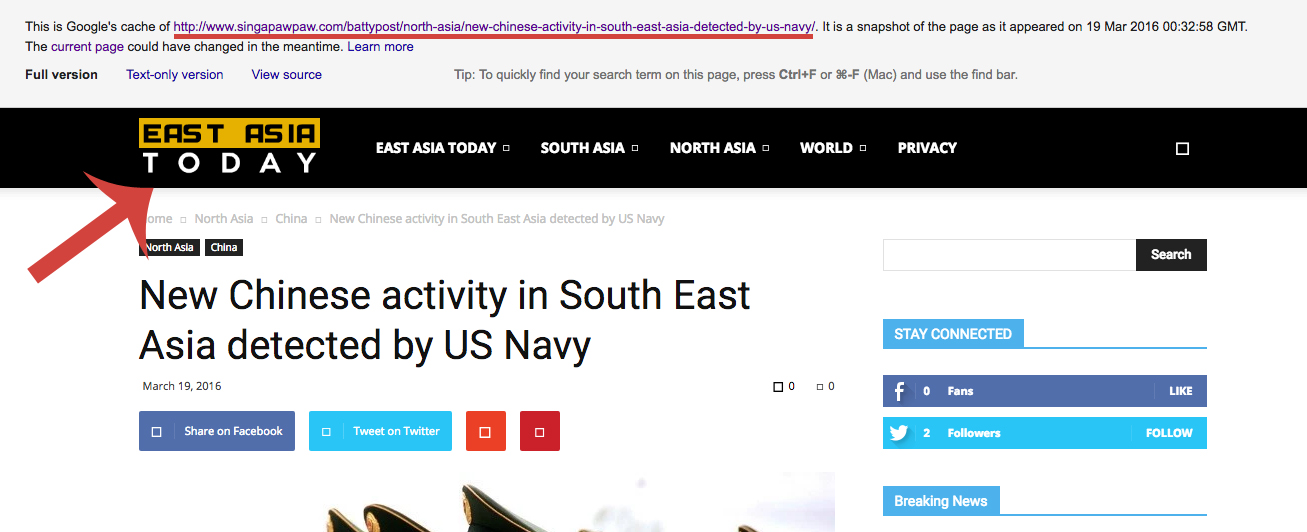The Truth Behind That 'Horny' Singaporean Family Viral Story
In fact, most of the stories published by East Asia Tribune have proved to be of dubious nature.
Recently, stories from a site called "East Asia Tribune" have been making their rounds on social media, particularly this story about a Singaporean family who apparently insisted on observing their son having sex for the first time
The "sex" story re-surfaced and went viral on social media recently despite the fact that it was published more than two months ago. It basically tells the tale of a family living in Woodlands New Town, Singapore that insisted on watching their family member engage in a sexual act with his partner.
East Asia Tribune (EAT) also included a photo in the story, stating that the photo was posted by a member of the family and that the photo had gone viral on social media earlier.
Screengrab of World Of Buzz's report on Facebook (left) and screengrab of the story on The Coverage (right).
Image via World Of Buzz/The CoverageSome Malaysian sites such as World Of Buzz and The Coverage also picked up the story from East Asia Tribune and featured it on their site.
World Of Buzz received more than 1,400 Facebook shares and more than 8,900 shares on its own website for its article on the news.
However, it appears that the content of the article that was widely shared could have been mere fabrication
Singaporean website Mothership.sg has claimed that the photo on East Asia Tribute's controversial story is a doctored image.
It added that the image was "most likely taken from a behind-the-scenes shot from Due West: Our Sex Journey, a 2012 category 3 (soft porn) movie".
This is not the first time that a questionable story from EAT has gone viral on the Internet
One of the most notable stories by East Asia Tribune that has gone viral in recent times includes a series on a secret brothel in North Korea which is supposedly based on the accounts of an investigative journalist that goes by the byline Chu Jingyi.
According to East Asia Tribune (EAT), it "has grown into Asia’s largest and most trusted media organisation with offices in 23 countries across the region and around the world."
Apparently, it is headquartered in Shanghai and the EAT Group has media investments throughout Greater China and East Asia, and is a founding member of the Asia News Union Service.
Despite the virality of its articles, a quick check on East Asia Tribune has revealed that the site is most probably a fake. Here's why:
1. The dubious office address
East Aria Tribune has listed "EAT Tower, 444 Century Ave, Pudong 200135, Shanghai, China" as the address for its headquarters.
Yet, it was noted that there is no such building called "EAT Tower", let alone a No. 444 in Century Ave, Pudong, Shanghai, China.
2. The East Asia Tribune website was only created on 23 March 2016, less than three months ago
WHOIS is a system that helps to identify and provides contact information of a registered domain. The WHOIS information available to the public reveals that East Asia Tribune’s domain was created on 23 March 2016, appearing to be a fairly new website for a publication that claims to have been running for more than 40 years.
East Asia Tribune, on its About page, states that the publication has been in existence since 1972.
3. Inaccurate editorial content
In an article that was published by East Asia Tribune on 24 March 2016 about the 118-story tower in downtown Kuala Lumpur, the publication had attributed "PNB" as "Peanut Butter", when in fact, PNB is a legitimate organisation that refers to as "Permodalan Nasional Berhad".
4. When readers questioned the legitimacy of its articles, East Asia Tribune appeared to have deleted the readers' comments
A user on Quora by the name of Cher Tan had apparently inquired about a writer for an article on East Asia Tribune's Facebook page, and asked if they had any verifiable sources.
However, Tan claimed that her comments were deleted and she was later blocked from the page, disabling her from commenting further.
5. Little is known about East Asia Tribune's editor-in-chief, Alec N. Ustinov
EAT’s current editor-in-chief, Alec N. Ustinov is said to have held the position since 2004.
"Mr Ustinov is a veteran of the Russian media industry, having previously held the position of chief editor with the Moscow Journal," reads an excerpt from the About page on East Asia Tribune.
There is essentially no other information on "Alec N. Ustinov", the editor-in-chief of a supposedly internationally-known publication, besides the 'About' page and a feature on this site called 'The Batty Post'.
6. East Asia Tribune had apparently made a high-profile acquisition recently but there's very little information available on it
"Batty Post, a privately-held media organisation which was formed in Canada’s Qikiqtaaluk Region in 1914, has been sold to Shanghai-based East Asia Tribune Group, in a deal valued at USD59 million," the post dated 25 March which was on Batty Post read.
With both publications that supposedly have such long histories, it appears that no other sites actually reported about this acquisition.
However, that's not all.
A deeper search on Google about East Asia Tribune revealed a series of interesting revelations related to the site.
According to East Asia Tribune's Facebook page, the publication had apparently won awards from 'Asia News Union Service' for 'Newspaper of the Year 2011-2015'.
A search on Google for "Asia News Union Service" puts East Asia Tribune and "Batty Post" on the top 4 results out of 196 search results.
Nonetheless, what proved to be more interesting is the fifth Google search result, which points to a domain named "singapawpaw.com".
Attempts to view the said page failed because the "site is offline for maintenance".
It was noted that "Batty Post" was in the web page's url.
However, Google kept a cached version of the page.
A snapshot of the page on 19 March 2016 reveals that the site looked a lot like East Asia Tribune. In fact, a logo bearing the words "East Asia Today" spotted at the top left of the website looked almost exactly like East Asia Tribune's logo.
While that particular link to Singapawpaw's web page does not seem to work, the site is actually still up and running
Both East Asia Tribune's and Singapawpaw's WHOIS information does not reveal who registered the domains, but Batty Post's WHOIS shows that the domain is registered to an individual named "Vicky Tan".
While is believed that all three websites are linked together in some ways, it still remains unclear on how exactly are they related.
